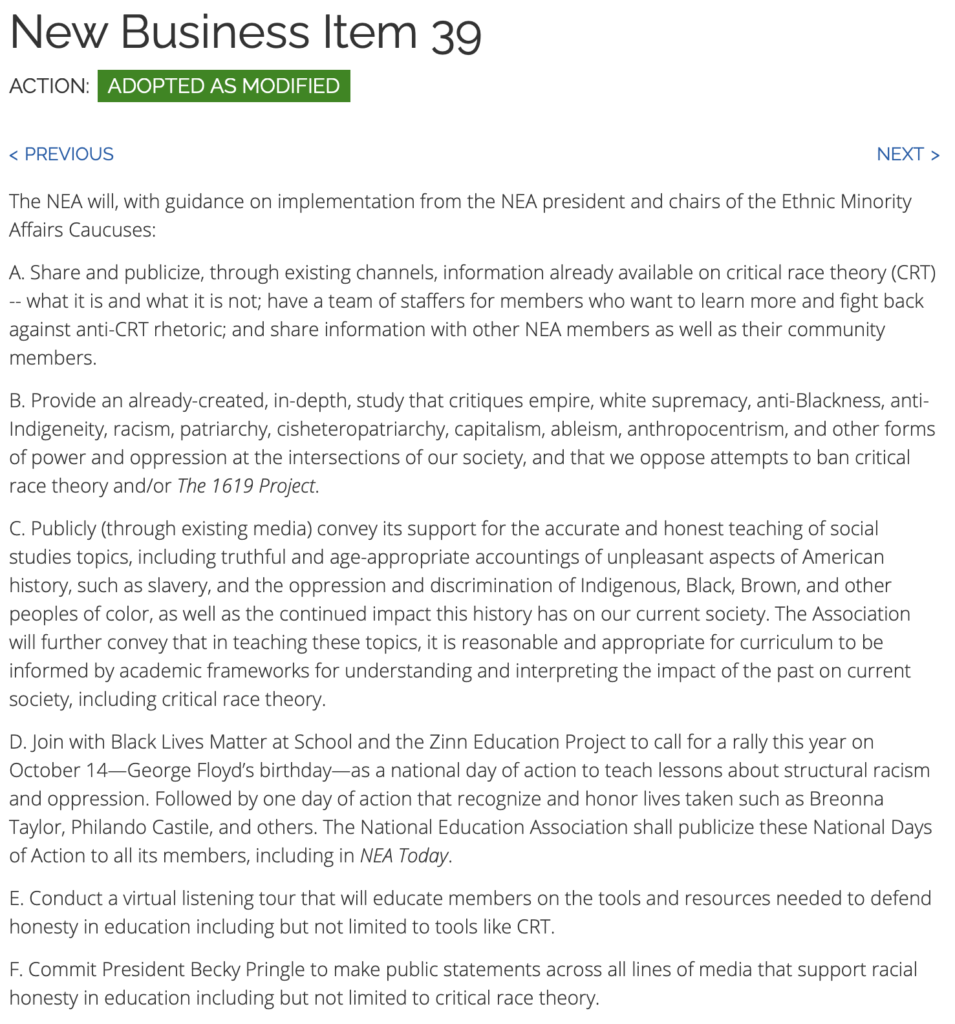CRT’s regressive themes are being taught in K-12 classrooms
“Critical Race Theory is not taught in K-12 schools,” American Federation of Teachers (AFT) president Randi Weingarten tweeted on July 6, 2021. And in another tweet: “We don’t teach Critical Race Theory in grade school. We teach history.”
So goes the argument from (most on) the left, that Critical Race Theory is only taught in law schools and higher ed institutions or that it just teaches “accurate” history.
Are K-12 educators getting up in front of their classrooms and directly stating, “Today we are going to learn about Critical Race Theory”? Not typically. Although there are instances of the theory’s explicit mention popping up in school equity policies and being offered to high school students as an elective.
But most often, it is the illiberal orthodoxy’s tenets and guiding ideas that are finding their way into classrooms — whether that is through class activities, supplemental instructional materials, academic standards, or colorful children’s books. One such book is Ibram X. Kendi’s Stamped (For Kids), which has been found in both public and private elementary and middle schools across the country, writes Moshe Levy, whose sixth-grade daughter was assigned the reading and who then read the book for himself.
In short, this book introduces young children to race essentialism, skewed history, reductive or biased analysis of social trends, and the lionization of radical political figures, all under the guise of “anti-racism.”
Levy provides a great analysis of the book in his article here, explaining how Kendi presents an overtly partisan history of the world, and America in particular, and limits history to only binary actors making binary decisions.
Kendi also fails to acknowledge any progress made during the 1960s Civil Rights era. While the Civil Rights Act of 1964 and the Voting Rights Act of 1965 were “by no means perfect,” Levy adds, “these laws put the entire apparatus of the federal government in motion for racial equality — which most people would agree was a significant positive change.” (Critical Race Theory’s definition by its practitioners rejects the methods, aims and goals of the Civil Rights Movement by calling into question the value of things like equality, rationalism, human rights, and neutral principles of law.)
In the end, Kendi’s perspective leaves readers with a “political manifesto, not a factual history book,” Levy concludes.
The AFT’s Share My Lesson website provides educators a lesson plan and guide for Kendi’s Stamped (For Kids) book. AFT also hosted a virtual event featuring Kendi, who has previously stated that CRT was “foundational” to his work.
In addition, the other national teachers’ union, the National Education Association, passed a new business item last summer to “publicize” CRT in the 14,000 school districts it collaborates with. Critical Race Theory is described as a “reasonable” and “appropriate” framework to inform curriculum. The new business item also supports critiquing “forms of power and oppression at the intersections of our society,” which include patriarchy and capitalism.
